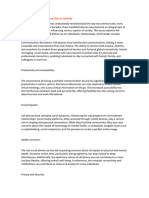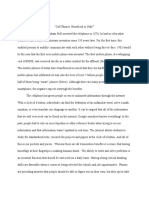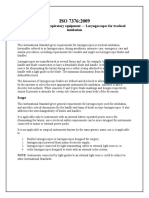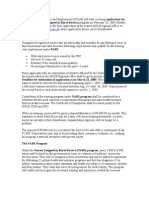0% found this document useful (0 votes)
9 views2 pagesTechnology Impact
The document discusses the significant impact of smartphones on society, highlighting both their positive effects, such as enhanced communication and accessibility, and negative consequences, including mental health issues and digital addiction. It emphasizes the need for society to balance the benefits of smartphone technology with the challenges it presents. Overall, smartphones have transformed various aspects of life, necessitating responsible management of their use.
Uploaded by
Djanie Rudolf OkoCopyright
© © All Rights Reserved
We take content rights seriously. If you suspect this is your content, claim it here.
Available Formats
Download as DOCX, PDF, TXT or read online on Scribd
0% found this document useful (0 votes)
9 views2 pagesTechnology Impact
The document discusses the significant impact of smartphones on society, highlighting both their positive effects, such as enhanced communication and accessibility, and negative consequences, including mental health issues and digital addiction. It emphasizes the need for society to balance the benefits of smartphone technology with the challenges it presents. Overall, smartphones have transformed various aspects of life, necessitating responsible management of their use.
Uploaded by
Djanie Rudolf OkoCopyright
© © All Rights Reserved
We take content rights seriously. If you suspect this is your content, claim it here.
Available Formats
Download as DOCX, PDF, TXT or read online on Scribd
/ 2




















































































